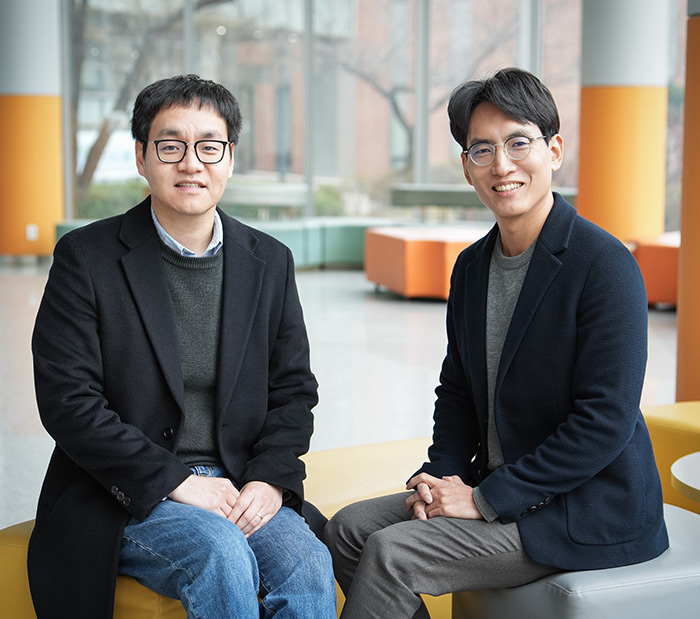Development of two novel methodologies for efficient representation of complex 3D scenes
전자전기/인공지능학과 박은병, 고종환 Prof. · Prof. Eunbyung Park and Prof. Jong Hwan Ko
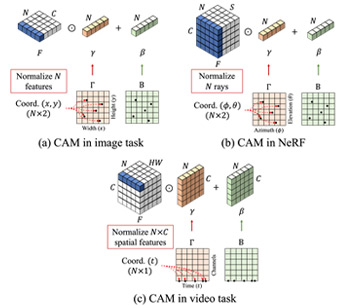
-

Chemistry HUH, JOONSUK Prof.
Quantum Algorithm for Calculating Molecular Vibronic Spectra
Recently, not only academics but also industries such as Google, IBM, and Intel are interested in quantum computation research. We expect a prototype quantum computer, which can outperform classical computers in 10 years. Among the various applications of quantum computing, quantum computational chemistry would become a major application area of quantum computing. Prof. Huh has been developing quantum simulation method for molecular vibronic spectroscopy for non-universal quantum computers. In this work, an efficient quantum algorithm for the molecular vibronic spectroscopy, which can be operated in the universal quantum computer, was developed. This new quantum algorithm based on the quantum phase estimation algorithm can be applied to more complicated molecular quantum anharmonic oscillator problems. Quantum algorithm for calculating molecular vibronic spectra Classical simulation of quantum algorithm for calculating molecular vibronic spectra
- No. 115
- 2019-07-24
- 3526
-
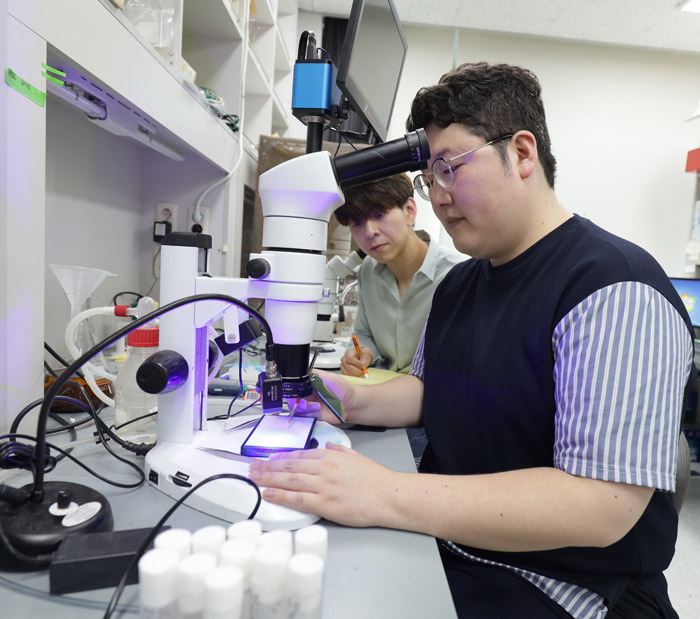
Medicine KANG, KYEONG JIN Prof. ·Researcher DU EUN JO
Discovering new biological meaning of detecting nucleophilicity
Photoreactive chemicals promote photo-injury and aging of the skin by generating radicals and ROS upon sunlight exposure. Vitamin B2, riboflavin, is a well-characterized phototoxin, tightly controlled to be present in the blood at low concentrations through kidney excretion, suggesting that organisms may have evolved to evade the phototoxic effect of essential nutrients. However, the molecular mechanism by which organisms sense phototoxins is unknown. In the submitted manuscript, we identified the sensory mechanism in insects, simultaneously revealing a cryptic property shared by its sensory ligands, phototoxins. Our results indicate that pigment molecules need to be nucleophilic to exert radical-generating (type-I) phototoxicity. To our knowledge, theories or experimental evidence associating nucleophilicity with phototoxicity are unprecedented. Nevertheless, this makes sense in that nucleophilic chemicals are inclined to donate electrons. When photo-excited electrons easily leave pigment molecules due to high nucleophilicity, free radicals can be readily produced from the pigment. We previously showed that nucleophile sensitivity of TRPA1(A) is critical for sensitively sensing free radicals arising from UV illumination (Du et al 2016 eLife). The submitted study together with the previous work indicates that nucleophile sensing ability of TRPA1(A) underlies detection of both cause (phototoxins) and effect (radicals) of phototoxicity as the sensory nexus for photoprotection, establishing nucleophilicity as a fundamental theme of photoreactivity. In addition to the frontier orbital (HOMO-LUMO) energy gap and other photochemical parameters fallibly predicting phototoxins, our study may provide a new strategy to appraise the intrinsic photoreactivity of chemical compounds, which is a concern/interest to researchers developing new drugs for human diseases. While mostly useful to select against type-I phototoxicity, our findings can be implemented to positively identify robust photosensitizers for photodynamic therapy of diseases such as cancer. On the other hand, there have been anecdotes in which oral intake of vitamin Bs repels mosquitoes, while ingestion-based tests discredited them. Our study, examining Anopheles gambiae TRPA1 expressed in frog oocytes, implies that application on clothes rather than ingestion of riboflavin helps avoid mosquito bites that transmit fatal illnesses.
- No. 114
- 2019-07-15
- 3213
-

SKK GSB WANG, YANBO Prof.
CEOs Often Time News Releases to Boost Value of Stock Grants
The timely release of news, from corporate quarterly reports to information about mergers or other significant corporate events, can have major impacts on companies; share prices. Chief executives are well aware of this. As Alex Edmans, Luis Goncalves-Pinto, Yanbo Wang, and Moqi Xu show in Strategic News Releases in Equity Vesting Months (NBER Working Paper No. 20476), CEOs often strategically time the issuance of favorable news releases for the months when their previously agreed upon equity grants are scheduled to vest. This raises the value of their equity positions at the time when they could first liquidate their holdings. For years, public companies have been required by regulators to release certain types of information, such as corporate financials or plans for annual shareholder meetings, on a timely basis as part of the effort to create a level playing field for all investors. Previous studies have shown that both non-discretionary (mandatory) and discretionary (voluntary) news releases by companies can increase liquidity, firm value, and share prices, and they have also explored the roles of CEOs in publicly distributing company information. In this study, the authors sought to determine whether CEOs' participation in the release of discretionary information could be linked to months when their equity grants, often negotiated years in advance, were scheduled to vest. To determine the vesting months for CEOs, the authors relied on data from Equilar between 2006 and 2011 and on hand-collected data from proxy statements and other SEC filings from 1994 to 2005. They found that CEOs were more likely to sell shares during their vesting months, although many CEOs did not sell shares at all. The authors then sampled 160,000 corporate news releases, using a database that allowed them to differentiate between non-discretionary and discretionary releases. They used Thomson Reuters News Analytics to determine whether subsequent media coverage was favorable or non-favorable to the company, and found that, on average, discretionary news releases were associated with positive media coverage. The authors conclude that disclosure of one discretionary news item in a vesting month generated an average 16-day abnormal return of 28 basis points, and that this return was statistically significant. Over 31 days, the return was smaller, suggesting that discretionary news releases may have only temporary price effects. The authors found 5 percent more discretionary news releases in CEO vesting months than in prior months. By linking the timing of discretionary news releases with their data on the exercise of stock options, the authors found that the median interval between a disclosure in a vesting month and the first equity sale by a CEO who sold was five days; the median interval until sale for the CEOs who sold the entire vesting amount was seven days. "This paper shows that managers strategically time the disclosure of discretionary corporate news to coincide with the scheduled vesting of their equity grants," the authors conclude. The news is associated with favorable media coverage and "leads to temporary increases in the stock price and trading volume, consistent with anattention [-getting] story. CEOs exploit these temporary effects."
- No. 113
- 2019-06-28
- 3757
-
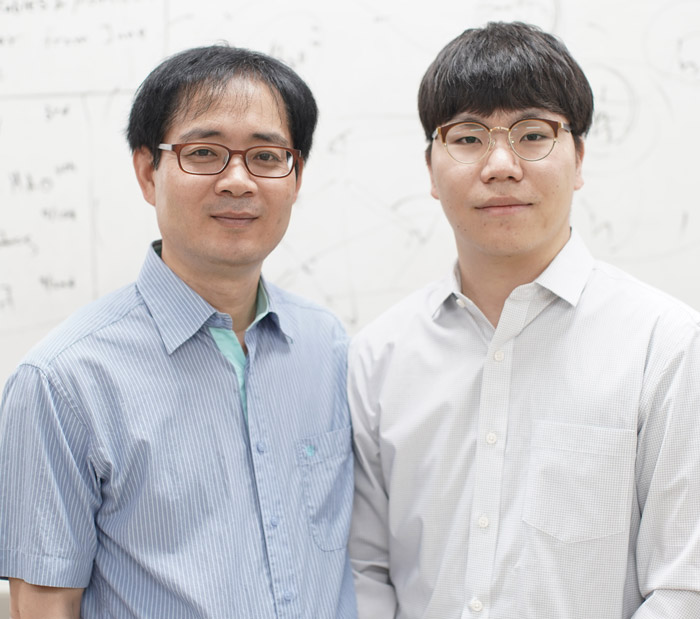
Chemistry LEE, JINYONG Prof. ·Researcher NAM, YEONSIK
Investigation on the influence of oxygen vacancy location on charge carrier losses in reduced TiO2 nanoparticle
A joint research team led by Prof. Jin Yong LEE (Dept. of Chemistry) and Prof. Oleg PREZHDO (Univ. of Southern California in USA) theoretically investigated the influence of oxygen vacancy location on the charge carrier losses in reduced titanium dioxide nanoparticles using quantum calculations. This research was published in the Journal of the Physical Chemistry Letters (IF: 8.709, JCR top 6.76 %) as of 8th May, with the title "Strong Influence of Oxygen Vacancy Location on Charge Carrier Losses in Reduced TiO2 Nanoparticles". Titanium dioxide is definitely the most popular resource for the photocatalytic materials on the fields of academia as well as industry. Currently, the photocatalytic activity of TiO2 is limited by the low absorption efficiency of visible light. Oxygen vacancy defect is artificially introduced or natively exist resulting in the enhancement of the visible light absorption. However, the recent studies reported the contradictory experimental results for photocatalytic activity due to the subsequent change of the electron-hole recombination rate by the oxygen vacancy defect. Still, there are many arguments on the influence of oxygen defect for charge carrier recombination and it has not reached any consensus yet. Prof. LEE’s team theoretically investigated the influence of oxygen vacancy location on the electron-hole recombination rate of reduced titanium dioxide nanoparticle based on quantum calculations for the first time. This work will be very useful to help researchers understand the photocatalytic activities of various experiments handling titanium dioxide nanoparticles. Prof. LEE said, "Our theoretical prediction properly explains the contradictory experimental results for photocatalytic activity of reduced titanium dioxide nanoparticles and our results provide guidelines for rational design of nanoscale metal oxides for solar energy harvesting and utilization." This research was supported by the POSCO Science Fellowship of POSCO TJ Park Foundation, National Research Foundation of Korea (NRF), Korea Institute of Science and Technology Information (KISTI) supercomputing center.
- No. 112
- 2019-06-14
- 3671
-
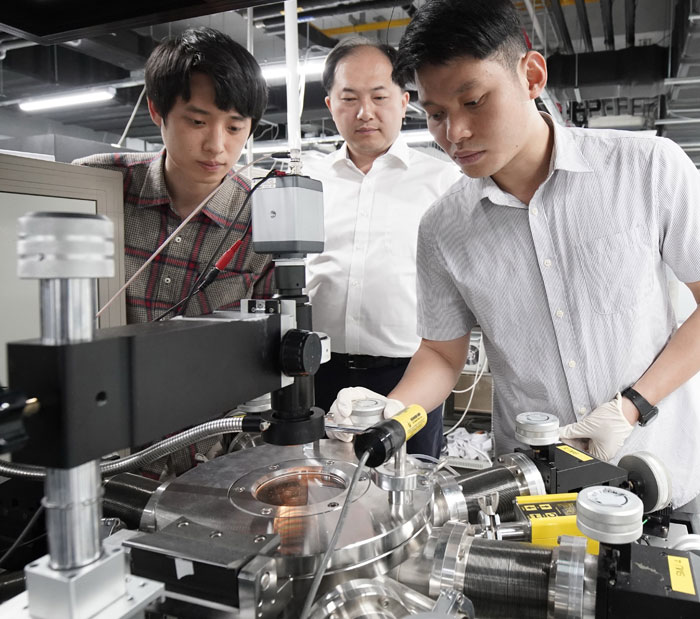
Energy Science JEONG, MUNSEOK Prof. ·Researcher NGOC THANH DUONG
Development of chameleon-like semiconductor nano device
Professor Munseok JEONG and researcher Ngoc Thanh Duong (in the doctor’s course) has developed a device technology through a joint research with Prof. Sungjoo LIM. The newly developed device is able to output different notation system (binary, ternary and quinary at maximum) depending on the existence of light. It has been posted on the world renowned journal ACS Nano(IF=13.709)’s April 23rd issue. A normal integrated circuit operates by storing either 1 or 0 as a “bit”. This is because the output of a device is recognized by two types: on and off. If an output larger than ternary notation can be realized in a device, it can extensively improve the performance of integrated circuit. The minimal unit of computer data processing “byte” uses 8 “bit” as the standard unit. Setting 1 byte as a standard, 6561 outputs can be produced by using ternary notation. This is 25 times greater than the binary notation, which produces 256 outputs. Also, if it is possible to realize a quinary notation, the performance will improve 1000 times with just a single byte. [Thesis] inverter device that changes notation by laser reaction The research team used two-dimensional materials such as Molybdenum ditelluride (MoTe2) and Molybdenum disulfide (MoS2) compound to create Van der Waals heterojunction device. They were able to develop multi-level electronic device by using the negative differential transconductance phenomenon discovered from the heterojunction device. Prof. JEONG said, “This research is expected overcome the difficulties in 4th industrial revolution such as the high power consumption of big data and AI and data processing speed by improving the efficiency of electronic devices.” This research was conducted in support of Institute for Basic Science and National Research Foundation of Korea.
- No. 111
- 2019-05-31
- 3626
-
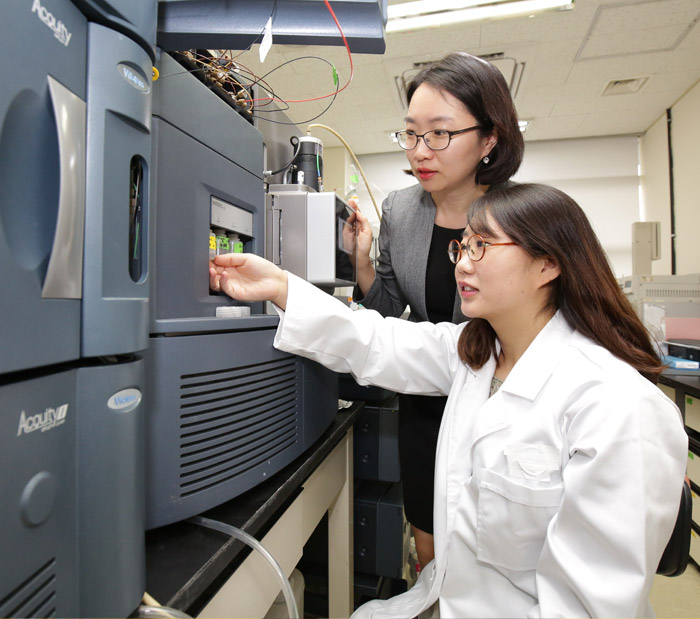
Pharmacy CHUNG, KA YOUNG Prof.
Elucidating activation mechanism of GPCR-mediated G protein
□ Professor Ka Young CHUNG’s research team (Lead author: Nguyen Minh Duc, Former PhD. student) from School of Pharmacy elucidated the mechanism of G protein activation by GPCR in collaboration with the 2012 Nobel laureate Professor Brian Kobilka’s research team. □ The research has been published in the world renowned journal, “Cell” on May 9th. ※ Journal title : Assmbly of a GPCR-G Protein Complex ※ Main authors : Ka Young Chung (Correspondence, SKKU), Brian K. Kobilka (Correspondence, Stanford University), David Lodowski (Correspondence, Case Western Reserave University), Nguyen Mihn Duc (Lead author, SKKU), Yang Du (Lead author, Stanford University), Soren GF Rasmussen (Lead author, Copenhagen University) □ G protein-coupled receptors (GPCRs) act as the gatekeeper of cell by accepting and transmitting extracellular signals such as hormones and medicines inside the cells. Approximately 40% of marketed drugs target GPCRs, and their importance in normal physiology and pathology was recognized by two scientists (Drs. Kobilka and Lefkowitz), who were awarded with Nobel Prize of Chemistry in 2012. □ The research teams studied the time-resolved structural mechanism of G protein activation by GPCRs. The results suggested that the GPCR-G protein complex structure (2012 Nobel Prize winning topic) occurs as a later event during GPCR-mediated G protein activation, even after GDP release. Therefore, the research group suggested that precise understanding of the early event during GPCR-mediated G protein activation is more appropriate for better understanding of the cellular procedure and development of drugs. □ This research was supported by Ministry of Science and ICT-National Research Foundation of Korea.
- No. 110
- 2019-05-16
- 3732
-
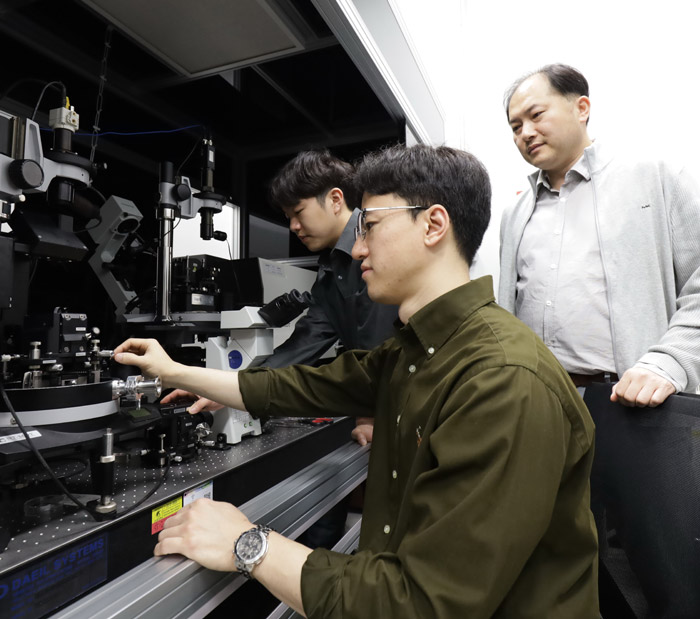
Energy Science JEONG, MUNSEOK Prof. ·Researcher LEE, CHANWOO
World’s first discovery of defect-related Raman scattering signal by using tip-enhanced Raman spectroscopy
Prof. Mun Seok JEONG’s research team (Department of Energy Science) reported that the defect-related Raman scattering signal was successfully obtained from a monolayer tungsten disulfide by using tip-enhanced Raman spectroscopy. Two-dimensional transition metal dichalcogenides (TMD) materials have been widely investigated due to their optical properties such as the bandgap engineering that depends on the number of layers. In particular, monolayer tungsten disulfide (WS2) shows intense photoluminescence with a relatively high quantum yield among TMDs. Thus, monolayer WS2 has attracted much interest as an outstanding material for 2D optoelectronic devices. To achieve the high performance of optoelectronic devices, the defect-free WS2 is highly required. Accordingly, it is necessary to establish a quality evaluation method by investigating the defects of monolayer WS2. The research team was able to detect new signals in areas with many defects by using tip-enhanced Raman spectroscopy, which can simultaneously perform surface nanostructure analysis and optical measurement. In addition, density functional theory (DFT) calculations confirmed that this signal is attributable to the sulfur atom (S) vacancies. The researchers called it a "D mode" from the defect and reported that it provides a criterion for evaluating the quality of monolayer WS2 compared to the intensity of the signal in the defect-free area. Prof. JEONG said, “It is notable that this study was the first to detect signals related to defects in two-dimensional semiconductor materials. In the future, it can be applied to various two-dimensional semiconductor materials to determine quality evaluation standards, and it can accelerate the commercialization of two-dimensional semiconductors. These findings have been published in the journal “ACS Nano (IF = 13.709)” (October 23rd 2018). This work was supported by IBS-R011-D1 and the National Research Foundation of Korea (NRF) Grant funded by the Korean government (MSIP) (2016R1A2B2015581). Mr. Chanwoo LEE (Ph.D. candidate, Departmentof Energy Science) participated as the lead author and Dr. Seung Mi LEE (Korea Research Institute of Standards and Science) participated as a co-corresponding author. (Diagram) Measurement of defects
- No. 109
- 2019-05-07
- 3398
-
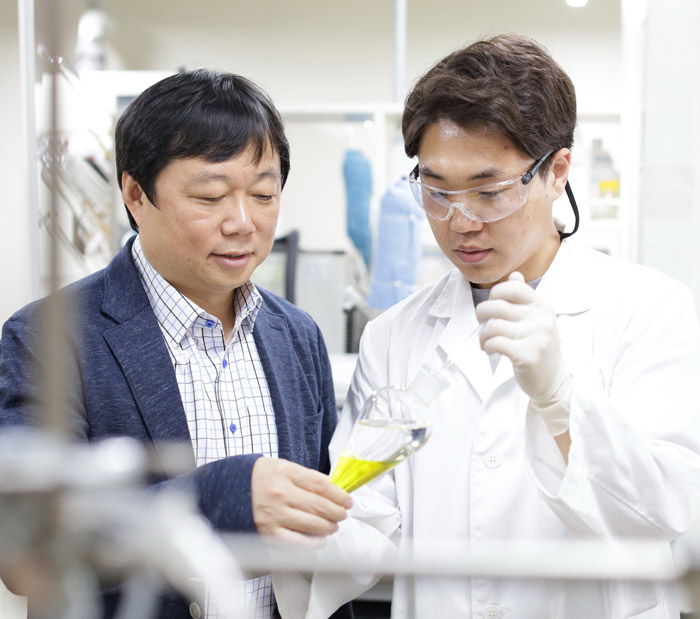
Chemistry RYU, DOHYUN Prof. ·Researcher SHIM, SUYONG
Development of Catalytic Asymmetric Synthetic Method of Cyclobutanones
A research team led by Prof. Do Hyun RYU (Dept. of Chemistry) has developed Lewis acid catalyzed asymmetric synthetic method of cyclobutanones. Chiral four-membered carbocyclic compounds are key structures of bioactive natural products. Therefore, they have attracted a lot of attention in the academic and industrial world. Although four-membered carbocyclic ketone compounds can be obtained from cyclopropane compounds through ring-opening reactions, there has been no example of asymmetric synthesis of cyclobutanones from cyclopropyl aldehydes through rearrangement reactions. The research team developed asymmetric synthetic method of cyclobutanones with chiral Lewis acid catalyst through tandem cyclopropanation/semipinacol rearrangement reaction to give good yields and high enantioselectivities. The newly developed methodology exhibits excellent atom economy because it utilizes simple starting materials and only produces nitrogen gas (N2) as a by-product. Prof. RYU said, “the synthesis of chiral cyclobutanone compounds through rearrangement of cyclopropyl aldehydes has been an unresolved challenge for the last 50 years. This work is highly valuable because this is the first research result with a catalyst and provides experimental results to elucidate the reaction mechanism.” Cyclobutanones are highly useful compounds because they can be utilized in ring expansion or ring opening reactions due to their innate ring strain. In this regard, this synthetic method is expected to be valuable synthetic tool for further organic synthesis. This research was published in the ‘Journal of the American Chemical Society (JACS; IF : 14.357)’ as of August 8th, 2018, with the title of “Asymmetric Synthesis of Cyclobutanone via Lewis Acid Catalyzed Tandem Cyclopropanation/Semipinacol Rearrangement”. This work was selected as the cover page.
- No. 108
- 2019-04-24
- 3057
-

Chemical Engineering BAE, JONG WOOK Prof. ·Researcher HAM, HYUNGWON
Conversion of CO2 to value-added petrochemicals using highly ordered mesoporous metal oxides and zeolites
The energy and chemical consumptions in the world have been steadily increasing, and it has led to the rapid depletion of energy and petrochemical resources. When fossil fuels are burnt they predominantly produce CO2, which has been identified as a major factor contributing to climate changes. The present use of natural resources does not secure the ability of future generations to meet their own energy and petrochemical needs. The utilization of these fossil and unconventional resources also impair the problems associated with the greenhouse gas emissions (especially, CO2) and thus it is vital for mankind to find renewable, sustainable and environmentally friendly alternative chemicals. Figure 1. (a) World’s primary energy resources and (b) their uses [Green Chem. 16 (2014) 2015] Conversions of syngas including CO2 into a broad spectrum of hydrocarbon fuels (gasoline, diesel and jet fuels), oxygenates (dimethyl ether and alcohols) and building-block chemicals (light olefins and aromatics) are the core technology of C1 chemistry (Figure 1). This method has a significant potential to replace the existing petroleum-derived products in the petrochemical industry. It uses biomass for syngas generation, which can produce CO2-neutral fuels and chemicals as well. Syngas (primarily a mixture of CO and H2 with various amount of CO2), a key feedstock in chemical, oil and energy industries, can be obtained from non-petroleum carbon resources namely coal, natural gas, biomass and solid waste. Therefore, most of the research efforts have been currently devoted to the developments of efficient and stable transition metal-based catalysts with suitable reaction parameters. Syngas conversions are largely motivated in C1 chemistry (Figure 2). Figure 2. Transformations of syngas into various carbon containing fuels, oxygenates and building-block chemicals via different catalytic processes In our Laboratory, the synthesis of dimethyl ether (DME) from syngas containing CO2, which is widely used as one of the crucial chemical intermediates for producing of value-added petrochemicals, and its transformations to value-added chemicals such as benzene, toluene and xylenes (BTX) have been intensively studied by using the highly stable ordered mesoporous metal oxides as well as highly crystalline zeolites. Those heterogeneous catalytic systems can be one of the efficient routes to utilize the CO2 greenhouse gas to the value-added chemical intermediates through CO or CO2 hydrogenation reaction. Those recent results were published in the journals of Applied Catalysis B (2017, IF: 11.698), ACS Catalysis (2018, IF: 11.384) and Advanced Materials (2019, IF: 21.95) as well. Figure 3. Utilization of alternative feedstock to value-added petrochemicals by using highly ordered mesoporous metal oxides combined with crystalline zeolites
- No. 107
- 2019-04-10
- 3862
-
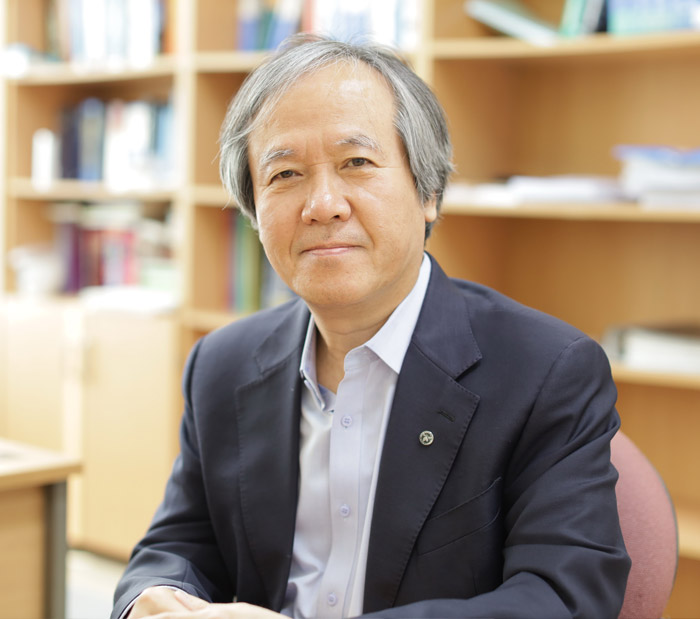
Chemistry SONG, CHOONGEUI Prof.
Did Life Begin Within A Water Cage?
Prof. Choong Eui Song (Department of Chemistry) and his students have recently published a significant article, titled “Hydrophobic chirality amplification in confined water cages” in the world-renowned international journal, Nature Communications. In this study, they provided a plausible scenario for the chiral amplification process, which might help unlock secrets of homochirality on our planet. Homochirality is a fundamental component of molecular recognition in biological systems. Enantiomers (optical isomers) are chiral molecules that are mirror images of one another. They are also non-superimposable to one another. For all intents and purposes, pairs of enantiomers have the same Gibbs free energy. Thus, both enantiomers of a compound will form in equal amounts (a racemic mixture) when we synthesize them in the laboratory under non-chiral environment. However, all living forms on Earth consist of single enantiomer of molecules like D-sugars and L-amino acids, which are basic components for DNA, RNA and proteins (i.e., homochiral). Although homochirality in life forms is found in all living things from wild grasses to human beings, its origin still remains as an unsolved mystery. Most theories for biological homochirality require a chiral amplification mechanism that acts to enhance a small initial asymmetry. Prof. Song’s research team discovered that water can act as a chirality amplifier and thus the enantioselectivity of an asymmetric catalytic reaction can be greatly amplified in the aqueous microdroplets. Flow and batch reactors were evaluated to confirm this general water-induced hydrophobic effects on enantioselectivity. They presumed that this water-enabled chirality amplification stems from the hydrophobic hydration effect, which enforces proximity of the hydrophobic catalyst and substrates in confined water cages and consequently leads to a more compact transition state. Prof. Song says, “This remarkable observation could provide some inspiration for developing new strategies to enhance the enantioselectivity of some catalytic reactions and thus has the potential to open a new chapter in the field of asymmetric catalysis. In addition, considering that the aqueous environment of early Earth resembled aerosol droplets (mist, clouds, and spray, etc.) at the surface of oceans, our results would also offer one of the reasonable scenarios for the chirality amplification process which led to the present homochirality life on our planet. Furthermore, it is likely that the limited diffusion of enantio-enriched products in such droplets might provide a chance to participate in a self-replicating, evolvable system in the prebiotic era.” *Article title: Hydrophobic chirality amplification in confined water cages” Nature Communications, 10, 851 (2019) (DOI: 10.1038/s41467-019-08792-z). Figure 1. Photos of asymmetric catalytic reaction under on-water conditions. a. before reaction; b. during reaction; c. after reaction. Figure 2. Flow microchip reactor Figure 3. (a) Flow microreactor system (b) Plug volume can be controlled by varying the relative flow rates of the two phases (c) Effect of biphasic microfluidic conditions
- No. 106
- 2019-04-01
- 3378
-

Pharmacy KIM, KI HYUN Prof.
GABA-modulating bacteria of the human gut microbiota
□ Prof. Ki Hyun KIM (School of Pharmacy) and his co-researchers in Northeastern University and Harvard Medical School have recently published a significant article, titled “GABA-modulating bacteria of the human gut microbiota” in the world-renowned international journal, Nature Microbiology (Impact Factor 14.174). □ The gut microbiota affects many important host functions, including the immune response and the nerve system. However, while substantial progress has been made in growing diverse microorganisms of the microbiota, 23–65% of species residing in the human gut remain uncultured, which is an obstacle for understanding their biological roles. A likely reason for this unculturation is the absence in artificial medium of key growth factors that are provided by neighbouring bacteria in situ. □ In the present study, we used co-culture to isolate KLE1738, which required the presence of Bacteroides fragilis to grow. Bioassay-driven purification of B. fragilis supernatant led to the isolation of the growth factor, which, surprisingly, is the major inhibitory neurotransmitter GABA (γ-aminobutyric acid). Surprisingly, GABA was the only tested nutrient that supported the growth of KLE1738, and a genome analysis supported a GABA-dependent metabolism mechanism. □ Using growth of KLE1738 as an indicator, we isolated a variety of GABA-producing bacteria, and found that Bacteroides ssp. produced large quantities of GABA. Genome-based metabolic modelling of the human gut microbiota revealed multiple genera with the predicted capability to produce or consume GABA. A transcriptome analysis of human stool samples from healthy individuals showed that GABA-producing pathways are actively expressed by Bacteroides, Parabacteroides and Escherichia species. □ By coupling 16S ribosmal RNA sequencing with functional magentic resonance imaging in patients with major depressive disorder, a disease associated with an altered GABA-mediated response, we found that the relative abundance levels of faecal Bacteroides are negatively correlated with brain diseases associated with depression. □ The research is evaluated to be the first case of integrated research between human gut microorganism cultivation and natural product chemistry. It is expected to propose potential in the development of new therapeutic and preventive agents to treat depression using GABA-modulating bacteria. *Thesis title: GABA-modulating bacteria of the human gut microbiota, Nature Microbiology, 4, 396–403 (2019) (doi.org/10.1038/s41564-018-0307-3). Fig. 1 Co-culture assay to isolate KLE1738. Fig. 2 In vitro and in silico identification of GABA-modulating bacteria. Fig. 3 Relative abundance of faecal Bacteroides inversely correlates with functional connectivity between left DLPFC and DMN structures in patients with MDD.
- No. 105
- 2019-03-22
- 3454
-
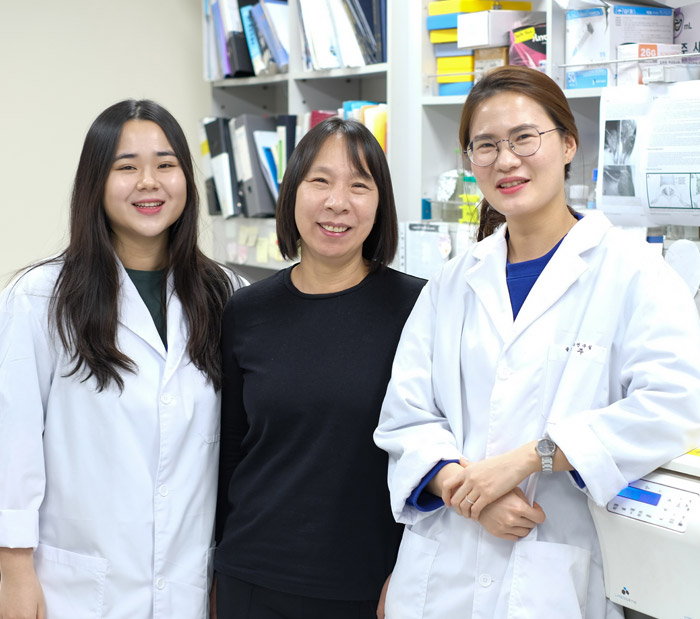
Medicine KANG, JONG SUN Prof. ·Dr. JUNG, Hyun Joo
Skeletal muscle-specific Prmt1 deletion causes muscle atrophy via deregulation of the PRMT6-FOXO3 axis
Skeletal muscle wasting is caused by physical disuse, aging and chronic diseases and it is detrimental for the metabolic health and aggravates other chronic diseases, leading to increased morbidity and mortality. In atrophying muscles, FOXO transcription factors are activated which in turn regulate multiple components of the ubiquitin-proteasome pathway, such as the muscle-specific ubiquitin ligases muscle RING-finger (MuRF1) and Atrogin1/MAFbx, leading to accelerated proteolysis and atrophy. Thus, the mechanism by which FOXO transcription factors are regulated in skeletal muscle needs to be investigated to better understand muscle homeostasis and dysfunction. Protein arginine methyltransferases (PRMTs) have emerged as important regulators of skeletal muscle metabolism and regeneration. However, their function in skeletal muscle remodeling and homeostasis remains unclear. In this study, we investigated the role of PRMT1 in skeletal muscle by utilizing skeletal muscle-specific PRMT1 knockout mice. We found that muscle-specific PRMT1 deficiency leads to muscle atrophy. PRMT1 level is decreased in the fasted state of skeletal muscle while increased in the refed condition. Consistently, PRMT1-deficient muscles exhibit enhanced levels of FoxO3a and muscle-specific ubiquitin ligases, MuRF1 and Atrogin1 that are associated with protein degradation. The mechanistic study reveals that PRMT1 regulates FOXO3 through PRMT6 modulation. In the absence of PRMT1, increased PRMT6 specifically methylates FOXO3 at arginine 188 and 249, leading to its activation. Finally, we demonstrate that PRMT1 deficiency triggers FOXO3 hyperactivation, which is abrogated by PRMT6 depletion. Taken together, PRMT1 is a key regulator for PRMT6/ FOXO3 axis in the control of skeletal muscle maintenance. Thus, PRMT1 may be a target to prevent muscle wasting under specific pathological conditions and related metabolic diseases. This research was conducted as a joint research of researchers from SKKU and Korea University. It was posted on the online version of the Autophagy journal on January 2019. Diagram 1. Cross sectional areas of the muscle that manifests Myh type IIb (MYH4) is reduced in Skeletal muscle specific PRMT1 deficient mice’s anterior (TA) and muscle extensor digitorum longus (EDL) Diagram 2. The manifestation of PRMT1 inskeletal muscle reduced from the fasted state while increased in the state of refed Diagram 3. In a PRMT1 deficient muscle the excessive increase of PRMT6 causes muscle wasting due to the continual activation of FOXO3
- No. 104
- 2019-03-08
- 3996



